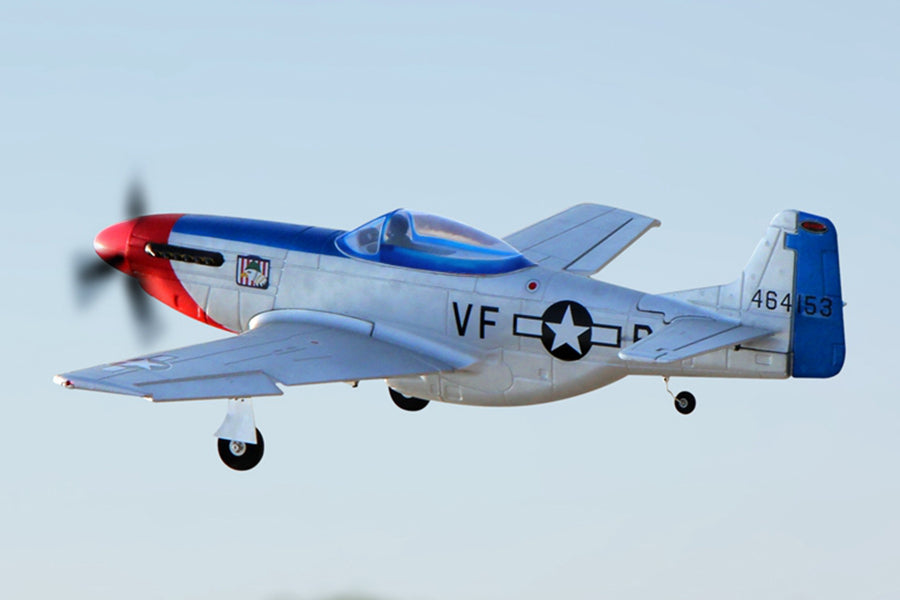The P-51 Mustang: A Legacy of Excellence
Corps
Introduction
The P-51 Mustang is often heralded as one of the most iconic fighter aircraft of World War II. With its sleek design, exceptional performance, and significant impact on aerial warfare, the Mustang transformed the landscape of air combat. This blog will delve into the historical significance of the P-51 Mustang, its technical specifications, and a look at the modern hobbyist variant, the Dynam P-51.
Historical Background
The P-51 Mustang was developed in the early 1940s by North American Aviation (NAA) at the request of the British Air Ministry. The aircraft first flew in 1940, and its design was influenced by earlier airframe concepts. The British sought a fighter to supplement their existing fleet, particularly in the face of the Luftwaffe's dominance in the early years of the war.
Early Development
Initially, the P-51 was powered by the Allison V-1710 engine, which limited its high-altitude performance. Despite this drawback, the aircraft showed promise and was quickly adopted by the Royal Air Force (RAF) as the Mustang Mk I. However, its real potential was unlocked when it was fitted with the Rolls-Royce Merlin engine, which significantly improved its performance, allowing it to compete effectively at high altitudes.
Combat Service
The P-51 Mustang became operational in 1942 and was instrumental in the Allied air campaigns over Europe. Its long-range capability enabled it to escort bombers deep into enemy territory, providing critical protection against enemy fighters. The introduction of the P-51 into service coincided with the shift in the air war over Europe, contributing to the eventual air superiority enjoyed by Allied forces.
A Game-Changer
The P-51 was not just a fighter; it became a symbol of American air power. It was known for its speed, agility, and range. Pilots praised its handling characteristics, and it was capable of taking on the best of the Luftwaffe, including the formidable Focke-Wulf Fw 190 and Messerschmitt Bf 109. By the end of the war, the P-51 had claimed over 4,900 enemy aircraft, making it one of the most successful fighters of the conflict.
Technical Specifications
The P-51 Mustang's design featured several key elements that contributed to its exceptional performance:
Airframe
- Wingspan: 37 ft 0 in (11.28 m)
- Length: 32 ft 3 in (9.83 m)
- Height: 13 ft 8 in (4.16 m)
- Wing Area: 235 sq ft (21.8 m²)
The P-51's low wing design not only improved aerodynamics but also allowed for better visibility for the pilot. The aircraft’s airframe was constructed primarily of aluminum, which provided a balance between strength and weight.
Powerplant
- Engine: Packard V-1650-7 (licensed version of the Rolls-Royce Merlin)
- Horsepower: 1,490 hp
The Merlin engine greatly enhanced the P-51’s altitude performance, enabling it to reach speeds of up to 437 mph (703 km/h) at 25,000 feet. This made it one of the fastest fighters of its time.
Performance
- Maximum Speed: 440 mph (710 km/h)
- Service Ceiling: 41,900 ft (12,800 m)
- Range: 1,000 miles (1,600 km) with drop tanks
The P-51’s long-range capabilities were particularly important for bomber escort missions, allowing it to accompany bombers on deep raids into enemy territory without refueling.
Armament
- Guns: 6 × .50 cal (12.7 mm) M2 Browning machine guns
- Bomb Load: Up to 2,000 lbs (907 kg) of bombs or rockets
The Mustang’s armament was sufficient to engage enemy fighters effectively while also providing versatility for ground attack missions.
The Dynam P-51 Mustang
With the enduring legacy of the rc p51 mustang, many model manufacturers have created replicas for aviation enthusiasts and hobbyists. One notable example is the Dynam P-51 Mustang, a radio-controlled (RC) aircraft that allows enthusiasts to experience the thrill of flying this iconic fighter.
Features of the Dynam P-51
-
Scale Model: The Dynam P-51 is designed to be a scale representation of the original aircraft, capturing its aesthetic features and paint schemes that pay homage to the WWII-era Mustangs.
-
Flight Performance: This model offers impressive flight characteristics, with a good balance of speed, maneuverability, and stability. It is suitable for both beginners and experienced pilots, making it a popular choice in the RC community.
-
Power System: The Dynam P-51 is typically equipped with a brushless motor and LiPo battery, providing ample power for extended flight times and performance comparable to the original in terms of flight dynamics.
-
Durability: Constructed from durable materials, the Dynam P-51 is designed to withstand the rigors of flying, making it a reliable option for RC enthusiasts.
-
Assembly: The model usually comes as an almost ready-to-fly (ARTF) kit, meaning minimal assembly is required, allowing pilots to get in the air quickly.
Community and Events
RC models like the Dynam P-51 have created a vibrant community of enthusiasts who participate in events, airshows, and competitions. These gatherings often celebrate the history and legacy of the P-51 Mustang, fostering a deeper appreciation for aviation history.
Conclusion
The P-51 Mustang is not just an aircraft; it is a symbol of innovation, resilience, and excellence in aviation history. Its remarkable performance and strategic importance during World War II solidified its status as one of the greatest fighters of all time. Modern renditions like the Dynam P-51 allow enthusiasts to connect with this legacy in new and exciting ways, ensuring that the spirit of the Mustang continues to soar. Whether in the skies during WWII or at a local RC airfield, the P-51 Mustang remains an enduring icon of air power.










commentaires